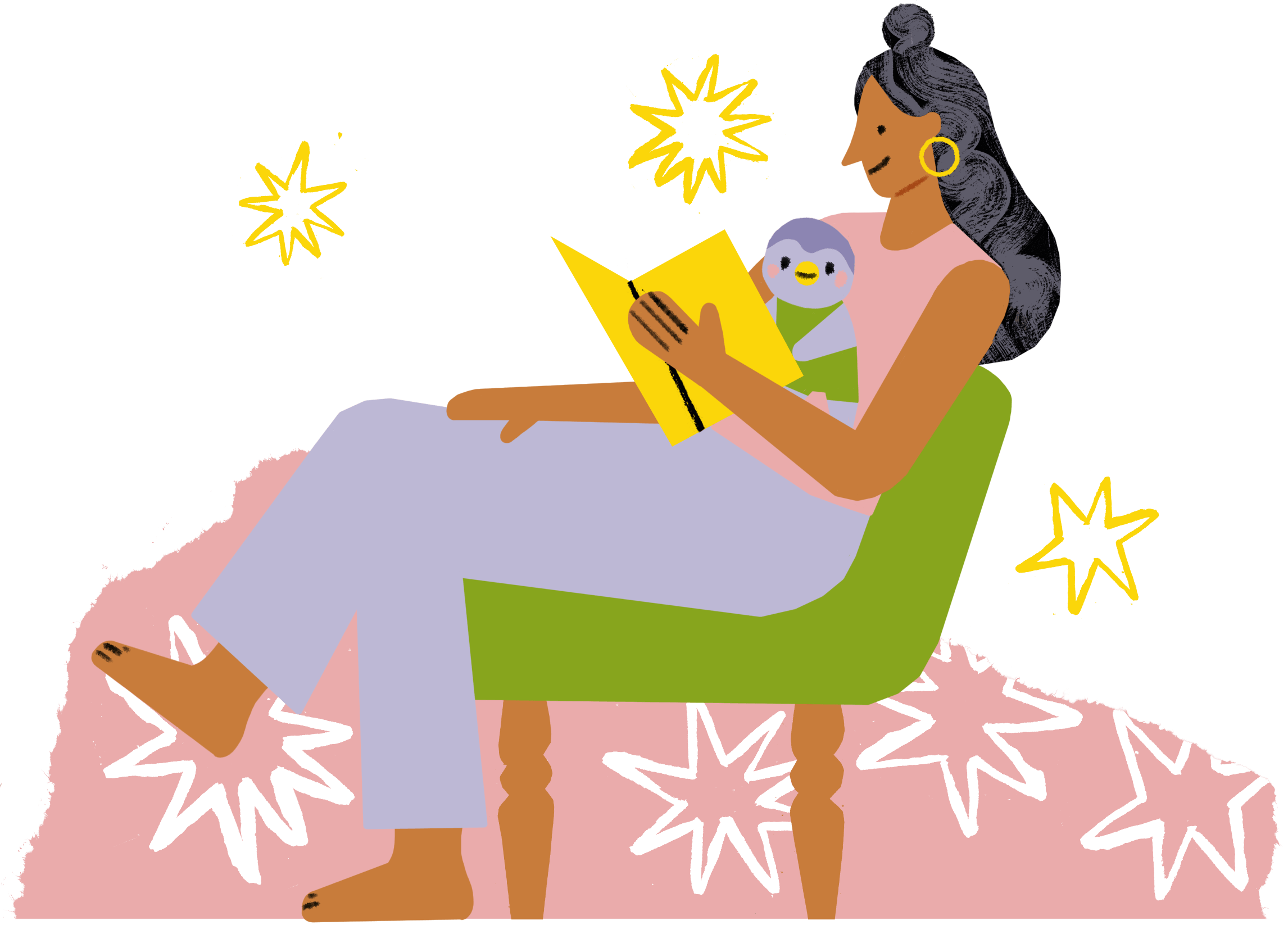How a little bird in bunny slippers taught me self-compassion
Illustration by Lizzie Lomax
by Dr. Jennifer Popa
For those who are embarrassingly bad at self-care, might I suggest making it a game? Enter: the Finch app and a campaign to refurbish my zen state. I began practicing self-care by first caring for a digital finch 200 days ago. As it turns out, a little bird for whom I can buy bunny slippers and bikinis was the ticket to self-care. Maybe it’s because I’m a millennial who never had a Tamagotchi or because I’m an easy mark for anything cute. Still, somehow I have miraculously cultivated meaningful habits alongside a digital pet.
What is Finch?
The app claims, “Daily self-care is finally fun — take care of your pet by taking care of yourself.” It’s not that self-care isn’t naturally “fun” per se… who doesn’t love a bubble bath or a “stupid little daily walk for my stupid physical and mental health.” But in our increasingly busy lives, it seems to be broadly expected that self-care will get shifted to the bottom of the priorities list. Finch incorporates a variety of features that focus on quality sleep, developing a morning routine, and expressive writing, among others.
Fellow longtime user and associate professor of Psychology and Counseling, Dr. Jessica Hartnett is a big fan of the app’s flexibility and accessibility. She appreciates their guardian program, where users can financially sponsor someone who cannot afford the app’s premium version. Dr. Hartnett also conceives of accessibility within the context of the kind of day a user has. Finch offers daily goal-setting facilitation and what they call “first aid — an acknowledgement that some days are about survival, and one should celebrate getting out of bed just like any other goal. Current research claims that savoring and nostalgia both foster optimism, which Dr. Hartnett says ties into what she believes is the most impactful part of the user experience. She says, “If you mention the same people over and over again in your journaling, they'll ask you to reflect on that relationship or think of a memory of that person. I imagine that that's actually a mood boost that people don't recognize. That when we're most nostalgic and we think about where we are and where we've been, that that is a mood elevator.”
Lizzie Lomax
The what and why of gamification
With wellness gamification, what we’re really talking about is engagement and what motivators will prompt a user within a given demographic to stick with a digital health solution. Badges and rewards might work well for some, while progress bars and notifications could be what does it for others. A Research Dive report states that “Gamification technologies help people to adhere to the path of attaining their goals by tapping into their instincts and strengths. Gamification in healthcare apps serves as a good cop and bad cop at the same time, keeping up high enthusiasm as well as loyalty among people.” That enthusiasm keeps a user coming back, which is no small feat given that recent studies report the potential benefits of meaningful gamification can translate to empowering users and combatting work stress.
Dr. Darren J. Edwards is a senior lecturer at Swansea University working in the Department of Public Health, Policy, and Social Sciences. He has created his own gamified mental health app called ACTing MINDS. He says gamification can be a shortcut to helping a client visualize as a part of their therapeutic practice. Sometimes visualization can be a challenge, but by working in the virtual reality dimension, he hopes gamification can be “more immersive and create a safe space for people who’ve got mental health issues.” He also says gamification often employs embedded learning. Though a person may not be motivated to open a textbook to understand their mental health, they may consider a fun game — a game that can sneak in bite-sized lessons of resilience, present moment awareness, or even acceptance. Dr. Edwards notes that with embedded learning, “You’re learning without even knowing that you’re learning.”
How to choose the right app
Video game designer Adrian Hon claims, “Good gamification helps people achieve the goals they’ve set for themselves, for one, rather than those that the creators have set for them.” A certain degree of flexibility is necessary to align with the user’s needs. On locating the right app, Dr. Hartnett says, “You need to know what makes your weird little heart happy.”
Turns out my weird little heart needed a digital bird instead of yet another to-do list. Finch became my workaround. Though I knew I should practice self-care in theory, I struggled to sustain the habit. A digital pet might seem silly or have zero appeal to many, but for me, it infused the drudgery of self-care with a bit of whimsy and seamlessly embedded learning. So, have I eradicated depression, anxiety, and loneliness in my life? Of course not. But I have filled up my mental health toolbox so I’m more equipped to navigate life’s challenges and willing to administer “first-aid” on the especially challenging days. And in the process of helping myself, I’ve outfitted a finch with lederhosen (in several colors) and a yeti costume.
At a time when we’re facing a mental health epidemic, early interventions are more imperative than ever. According to Suicide Awareness Voices of Education, there is one suicide death about every ten minutes in the United States. Though digital health solutions won’t singlehandedly solve an epidemic, one cannot understate the value of a powerful metaphor to remind us all to be a little kinder to ourselves. And how convenient that we carry that reminder in our pockets.


